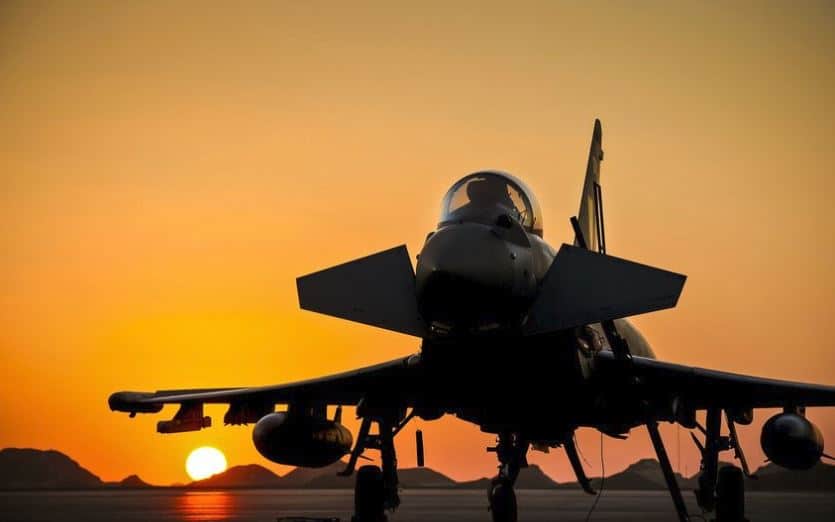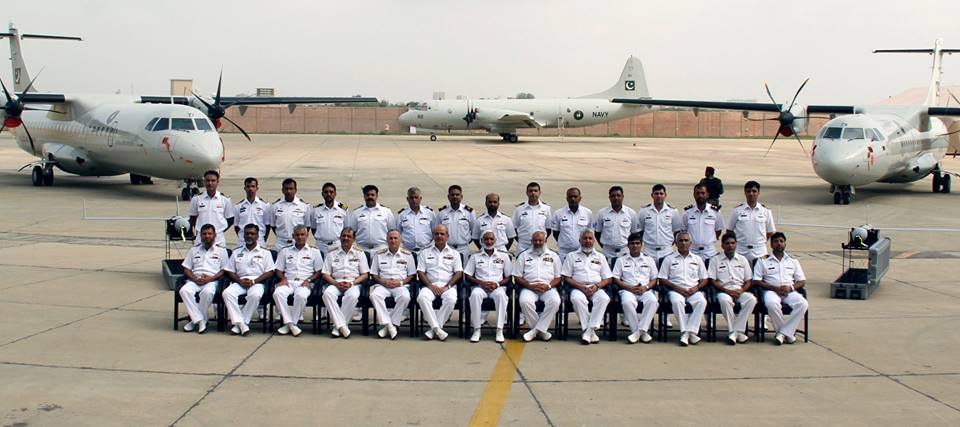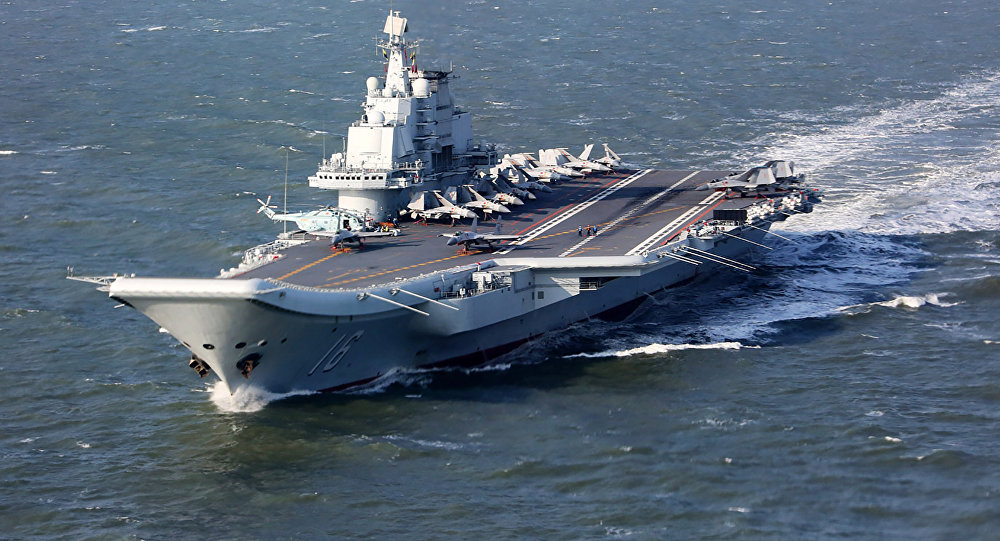2230Views 15Comments

Qatar inks $8 billion US deal for 24 Typhoon fighters from UK
Following its decision to exercise an option for 12 Dassault Rafale (adding to the 24 on order), Qatar has also concluded an $8 billion U.S. (£6 billion) deal with the U.K. for 24 Eurofighter Typhoon fighters.
In its press release, BAE Systems states that it expects Qatar to submit its first payment for the fighters by mid-2018, with deliveries expected to begin in late 2022.
“We are delighted to begin a new chapter in the development of a long-term relationship with the State of Qatar and the Qatar Armed Forces, and we look forward to working alongside our customer as they continue to develop their military capability,” said BAE Systems Chief Executive Charles Woodburn.
BAE Systems states that the Qatari order pushes the Typhoon’s global order count to 623.
The BBC reports that while the Qatari order ensures Typhoon production work at BAE through the 2020s, it will not prevent the loss of 2,000 jobs that the company announced in October.
Alongside training and maintenance support, the deal also includes the sale of an unspecified number of MBDA Meteor beyond-visual-range air-to-air missiles (BVRAAM) and MBDA Brimstone precision-guided air-to-ground missiles as well as Raytheon Paveway IV laser-guided bombs (LGB).
Qatar also intends to procure six Hawk trainers from BAE Systems. It has yet to sign this contract.
Though facing competition from Dassault, Boeing, Lockheed Martin, Saab and United Aircraft Corporation, the Eurofighter Consortium has largely captured (excerpt for Bahrain and the United Arab Emirates) the Gulf Cooperation Council (GCC) market with the Typhoon.
In 2016, BAE had expressed interest in securing a follow-on order of 48 Typhoons from Saudi Arabia, which operates 72 Typhoon Tranche 2 and Tranche 3 aircraft. It is unclear when (or if) this purchase is expected.
Notes & Comments:
Based on information from news reports, it appears that the Qatari Typhoon order includes air-to-air and air-to-surface munitions. Of the latter, Qatar is procuring the MBDA Brimstone, a potent close air support (CAS) weapon that was originally designed to be a successor to the AGM-114 Hellfire II.
Unlike the semi-active laser-homing Hellfire-II, the Brimstone uses a millimeter-wave seeker, which serves as an extremely-high frequency synthetic aperture radar that acquires a thorough image of the ground and can identify – as well as target – individual moving targets. This enables the Brimstone to engage moving vehicles in a fire-and-forget fashion. It has a tandem high-explosive warhead.
On the Typhoon, a single hardpoint can carry three Brimstone missiles. For Qatar, this suggests that the Typhoon will be available for CAS operations. Granted, the complete details of Qatar’s munitions package for the Typhoon are not yet known, it could plausibly mirror the Rafale purchase by also including stand-off range munitions, such as air-launched cruise missiles.
There is also the question of Qatar’s ability to fully operate the fighters alongside 36 Boeing F-15QAs and 36 Dassault Rafales. Considering that each of these deals include multi-year production and maintenance support as well as long-term after-sale support opportunities, the outcome of economic gain to the U.S., France, U.K (alongside Germany, Spain and Italy) cannot be dismissed. Each of these countries will have a stake in Qatar, which for Doha is important considering its deterioration of ties with Riyadh.



15 Comments
by mojo Bojo
They are not buying hardware, they are buying protection. They must have judged its better to spend $50 billion than lose $500 billion. The Abu Dhabi Zionist mafia wants to steal their assets and Gas reserves and they have made deals with the Tyrant Netanyahu regime to help them seize assets of Arab countries they sabotage like Libya and Yemen.
I’m sure those Western regimes can’t be trusted even if you spend $500 billion. Each of them will expect kickbacks for brokering the deal. They Qataris have enough goodwill with Muslims around the world so they are finding it difficult to execute their evil plans.
by TanhayeekiZubani
God knows what is going on ;), that’s a lot of useless hardware frankly..
are they recruiting personnel from the PAF to fly these jets? ;P
PS: The arabs need no help to start infighting. They have been doing so for ages at the slightest pretext. With fellows like Saudis and Qataris, is Israel even needed as a source of ‘saazish’? MBS just sold the Palestinians down the river and is busy faking outrage while the others in the GCC shed ‘crocodile tears’….
by Joseph
As Christian nations Europeans started two world wars among themselves, having the same religion does not seem to be something can be counted on.
From I hear Saudis have almost no friends in middle east. There is a new video just out on CaspianReport about Saudis might even end up forming some sort of allies with Israel, as ridiculous as that sounds, CaspianReport is actually a very serious channel.
Here is that video: https://www.youtube.com/watch?v=V5asWYmGOa8
by Steve
The Qataris should station a division of Turkish troops in their country, with 2 squadrons of Turkish airforce. Much better and cheaper protection by people who know how to fight!
by Shershahsuri
Qatar is inducting F-15, Typhoon and Rafales at the same time. They better choose either of them. It will be difficult to maintain different platforms in terms of training, maintenance and overhaul. However, Shiekhs leave no wish unrealized. Let’s how long these Shiekhs play feat with oil money.
by TanhayeekiZubani
The Saudis have been cooperating with Israel for a while now. I remember media in India talking about it one-two years ago about intelligence sharing and how Saudi was quietly pressurizing the backers of Hamas.
The tribal culture somehow seems to worsen squabbles in the case of the Arabs doesn’t it. Some of the arab world vendettas I have heard of frankly can give Sicilian vendettas a run for their money. Such a bloody waste of oil wealth… sigh!
by TZK
Interesting angle but overcooked the simple message which is that Israel and KSA both feel threatened by Iran so are likely to join forces. If I was Pak I would stay well away from any venture even if $$ or a few F16’s are waved in front of them.
by Joseph
I think it is subtler than that. One of the reasons stated in the video is that they feel threatened because Americans are withdrawing from middle east.
We can see that even as Americans putting pressure on Saudis, it has not produced any tangible result as yet. That might be a sign that American influence in the region is weakening as they withdraw.
If Americans are still active in middle east, they might try to use Pakistan to contain Iran, but if they are not, then maybe that won’t happen.
by TZK
‘ they might try to use Pakistan to contain Iran.’ The only leverage any country would have over Pak is economic. For a poor nation like Pak they easily fall prey, that’s why it is vital to develop economic independence. They are not going to do it by spending resources on weapons to match India. I note no one is trying to use India, as they know Indian answer.
by Joseph
Actually I believe India is actively used at the moment by US as a strategy to contain China. For that not only a lot, I mean a lot, advanced weapons are sold to India, but also India is invited to join a lot of arms control groups such as MTCR, NSG, Australia Group and Wassenaar Arrangementand, etc. All to improve India’s weapon technology to fight China. India also joined US, Japan, Australia and India, four country military alliance mainly to fight China and protect US interest in the pacific.
But there is no serious discussion about free trade agreement between US and India. I don’t think it is in US’s best interest to create another China and challenge US leadership. You can talk about human rights, democracy, etc. but in the end I think that is the cardinal sin of China, to be strong enough to threaten American dominance and the existing world order.
You can always argue India wanted to do all these things, so India is not used, but I don’t think it changes the fact of US strategy is using India to contain China.
To be honest there is nothing wrong with that, India is probably happy to be in a position to be used, it is a card for India to play. But in the end a poor country with a lot of weapons is no threat to US and I think that is the future of India US wants to see. As you pointed out, in the end a country’s real power comes from it’s economy.
by Kannakeepkalm
Lol bro
Really U think India will remain poor forever.pity.As an Indian I can only laugh.India is already the 6th largest economy and it is going to be in top 3 in a decade.This is not my opinion.World bank ,IMF,ADB,every rating agency is saying this.And you say.India is poor.India will have third largest defence budget in 4 to 5 years.
And about US using India.I can only laugh when someone from western border says this.As an Indian I know India is just securing her intersts.And is India falling prey to US. Just look what happened at WTO Conference.India and China were on one side and US on the other side.Again lol.
by Joseph
That is not what I said. I was merely saying although US would try to help India to strengthen it’s military forces to counter China, but US would unlikely to help India to strengthen economically.
If India’s economy were catching up to China, most likely it would face the same hostility from US as China is facing now.
For some reason US wants to hold on to it’s global leadership. Remember TPP, which was an US led free trade bloc formed specifically to isolate China. To put it another way, it is an economic group formed for geopolitical reasons.
As you can imagine US was making economic sacrifices to make this happen. Of course that is very foolish, weakening yourself economically is no way to hold on to global leadership in long term. That is why Trump dropped TPP immediately, and Japan abandoned TPP after US quit. Without the patsy (US) TPP makes no sense, and without US Japan becomes the patsy.
Japan later tried to revive TPP for the same reason as US started it before, making economic sacrifices to form diplomatic alliances. But unlike US Japan was not being vain, it’s security is more under threat than US from rising China.
Anyway, read my comments a bit more carefully. I am increasingly given the impressions that the majority of Indians here are overly sensitive.
by TZK
Everything has a price, its just that weaker nations tend to get ‘peanuts’ whilst more powerful nations get bigger carrots.
by Kannakeepkalm
Yeah This answer is more sensible from you.
Again I was practically replying to your poor India related comment.By the way, I agree that US wants to maintain its global leadership and it would do anything.US is free to do it.
Nothing else.
On Indian economy ,I can only say it is in Safe hands.US or anybody else cant affect our economy hugely.Because it is a consumer driven economy.Exports might suffer if US turns hostile.But thats not the case.India is having good relationship with every major economy of the world.
by Rolexer
Your assertion that “India is being actively used by the US” is a totally wrong misinterpretation of the mutually respected as well as beneficial India-US ties. India is not Pakistan in this regard, and India won’t let itself get used or pressurised by the US, if examples in the recent past are any indication. For example, US has been aggressively pushing for India to sign the CISMOA, BECA and LEMOA agreements since the late 2014. India only in the summer of 2017 signed the LEMOA pact and has been indefinitely stalling the signing of other 2 pacts. Even though it is touted that signing the CISMOA pact would enable greater tech transfer and US military equipment along with sensitive communication codes to Indian military. But Indian govt has been reluctant (and rightly so) citing sovereignty and security concerns.
Similarly US, esp. James Mattis in his recent meeting with India’s DM pushed for Indian troops in Afghanistan. Central government unanimously opposed that idea and limited itself to “economic assistance”. India could have put its own troops in harm’s way just to please US but it didn’t.
Regarding the much hyped up “quad” arrangement, you need to understand that it is an informal grouping with no formal pact or military alliance being forged between the 4 participating countries. Infact many security experts have questioned the effectiveness of quad, citing Japanese and Australian reservations in antagonising China too much.
Third, your assertion that US might be trying to woo India as a “proxy” against china is completely true. And I am not refuting that fact. But someone trying to use you is quite different from “you letting someone take undue advantage of you”, as was the case with Pakistan-US relation. India is only cozying up to US or reciprocating the warmth as long as India gets some latest defense tech which it doesn’t get from Russia or other european countries (for example drones). Apart from that India outrightly refuses or overlooks the US offer. Case in point is the aggressive marketing of american hardware like javelin missiles, F/A-18 (MMRCA tender), Stryker LAVs and many more which India discarded in favor of other foreign (israeli spike ATGM, french rafale and Russian BMP-3 respectively) equipment.
India joining MTCR and WA could also not be purely because of China. Even countries like Russia and France strongly supported India’s candidature. Multi billion dollars arms market which India provides is something which cannot be ignored. India joining MTCR and WA is a blessing for int’l arms companies (US, France and Russia) to sell their weaponry in India and make billions in profits.
Lastly, there is a broad consensus in Indian society that Russia, Israel and France were and will remain the true strategic partners of india. US is hugely unpopular due to its dealings with india in the past (for example 1971). Moreover people in India are also cognizant of the fact that any dealings with the US come with a lot of political strings attached. I am happy and quite satisfied the way our government is dealing with the americans…smartly and cleverly without getting into a tight embrace with them.